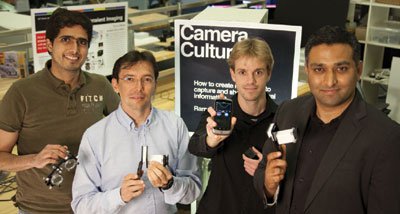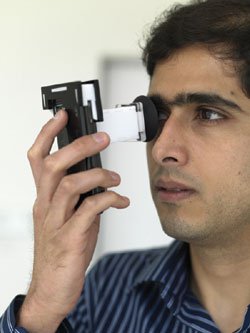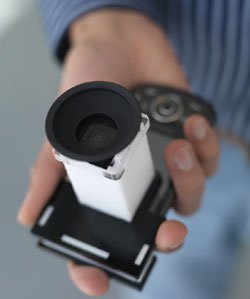Nonprofit hospital, industry group collaborate on corneal stem cell treatment
CHENNAI, India and OCEANSIDE, U.S.A. — International Stem Cell Corp. and Sankara Nethralaya, a nonprofit eye hospital and research center in Chennai, announced a collaborative effort to develop ISCO’s CytoCor stem cell-derived corneal tissue to treat corneal blindness and vision impairment.
CytoCor may offer a first-in-class opportunity for high-quality, cost-efficient transplantation tissue for the 10 million people worldwide suffering from corneal vision impairment, particularly in India and the rest of Asia, as well as in Europe, according to a press release from ISCO. Recent testing at Sankara Nethralaya and laboratories in the U.S. has demonstrated a range of structural, biochemical and refractory properties characteristic of human cornea.
CytoCor comprises transparent human tissue derived from pluripotent human stem cells. Standardized tissues derived in this manner could eliminate the possibility of transplanting diseased donor corneal tissue to the recipient. Genetically engineered tissue may also provide an alternative to the use of live and extracted animal eyes in the more than US$500 million market for safety testing of drugs and consumer products.
“Sankara Nethralaya is dedicated to the development and application of new state-of-the-art ophthalmic technologies,” according to S. Krishnakumar, MD. “The need for high-volume, high-quality human corneal tissue is substantial, not only in India but across Asia and much of Europe. We appreciate the opportunity to join ISCO in their pursuit to create a new standard of care for the treatment of human corneal disease.”
Dr. Krishnakumar and colleagues at Sankara Nethralaya will use CytoCor tissue in preclinical studies to determine if the tissue can withstand sutures and bio-compatible glues to validate its potential use in animal or human clinical trials.
|
|
|
|
Ankit Mohan demonstrates NETRA.
Images: Mohan A |
|
“The team at Sankara Nethralaya is pleased to collaborate with ISCO on stem cell-derived corneal tissue,” said Geetha Krishnan Iyer, MD, who specializes in ocular surface disorders. “In vitro studies to evaluate safety and efficacy of the tissue, as well as surgical feasibility tests will be carried out, following which there could be clinical application in lamellar keratoplasty using the above mentioned tissue,” she said in a release.
“With improvements in surgical techniques over the past few years, the indications for anterior lamellar keratoplasty have expanded significantly. With high demand for donor corneal tissue for the same but limited availability, there is definitely scope for utilizing ISCO’s corneal tissue following relevant tests,” Dr. Iyer said
Jeffrey Janus, senior vice president of operations at ISCO, voiced his approval of the venture.
“This collaboration with the excellent team of scientists and clinicians at Sankara Nethralaya has already proven to be productive. Sankara’s ophthalmology expertise and ISCO’s cell culture capabilities constitute a perfect match to perfect and advance CytoCor tissue towards future use in treating corneal disease and injuries,” he said in the release.
 The NETRA team: Ankit Mohan, Manuel M. Oliveira Neto, Vitor Pamplona and Ramesh Raskar at the MIT Media Lab. Image: Williams J |
In other activity, International Stem Cell is looking to collaborate with Insight Bioventures India to establish a development and manufacturing facility in India for its line of human stem cell therapeutics.
The Indian affiliate (ISCO India) will research and manufacture the firm’s CytoCor human corneal tissue for the treatment of corneal vision impairment as well as manufacture ISCO’s Lifeline Cell Technology line of research products.
Insight Bioventures India will lead the funding and establishment of the new facility and staff development and training in Hyderabad, according to the terms of a letter of intent signed by both companies. IBVI is a biomedical business facilitator that focuses on financing new businesses in India.
The partnership developed after ISCO’s collaboration with Sankara Nethralaya hospital to develop CytoCor. The ISCO affiliate will work closely with leading ophthalmology researchers and clinicians at the hospital.
“IBVI and their corporate, academic, and government network provide ISCO with an unparalleled opportunity to tap into the rapidly growing research product market in India and develop CytoCor with a team of experienced scientists and clinicians in the country with most corneal blindness and visual impairment in the world,” Brian Lundstrom, ISCO president, said in a press release. “IBVI’s Biofund investors enable us to do so without ISCO capital investment or issuance of equity shares.”
MIT develops clip-on cell phone device to test for refractive errors
Researchers at Massachusetts Institute of Technology have devised a method to easily measure refractive error using an inexpensive device that clips on to a cell phone.
The technique, called NETRA (near-eye tool for refractive assessment) uses a plastic device that currently costs less than $2, coupled with software that can be loaded onto a high-resolution cell phone.
The user attaches the device to the phone and looks through the viewfinder at close range. Using the arrow keys on the phone, the user aligns the displayed patterns. The user repeats this four times, once for each axis of the eye, while the application computes the corresponding refractive error for myopia, hyperopia and astigmatism. Once the user completes the process, the software provides a prescription.
Researchers tested accuracy of the technique in one study by comparing results from the device with actual user prescriptions. According to the NETRA website, in the controlled trial with 16 subjects, the average absolute errors from the known prescriptions were less than 0.5 D, with a standard deviation of 0.2 D for both cylindrical and spherical powers. The average absolute error of the cylindrical axis was less than 6°.
The NETRA system simplifies refractive assessment by measuring refractive error and gaining subjective feedback in one step, performed by the user, in less than 3 minutes. The technique relies on a simple alignment task rather than a user’s ability to discern blur, which researchers say makes it as accurate as using a Snellen chart, as well as more expensive testing methods.
According to a Vision 2020 report, the NETRA system is far and away the most inexpensive method of measuring refractive error, making it suitable for use in remote areas. The researchers have incorporated NETRA into the PerfectSight initiative, an MIT program designed to introduce NETRA to doctors worldwide.
Ramesh Raskar, associate professor of Media Arts and Sciences at MIT, presented the NETRA system at the SIGGRAPH 2010 Conference in Los Angeles, Calif., in July. – by Carey Cowles
Reference:
- Vitor F. Pamplona, Ankit Mohan, Manuel M. Oliveira, Ramesh Raskar. NETRA: Interactive Display for Estimating Refractive Errors and Focal Range. Proc. of SIGGRAPH 2010 (ACM Transactions on Graphics 29, 4), 2010. http://web.media.mit.edu/~pamplona/NETRA/
- Ramesh Raskar can be reached at Room E14-474G, 75 Amherst St, Cambridge, MA 02139, U.S.A.; website: http://raskar.info/; project website: http://eyenetra.com/.



